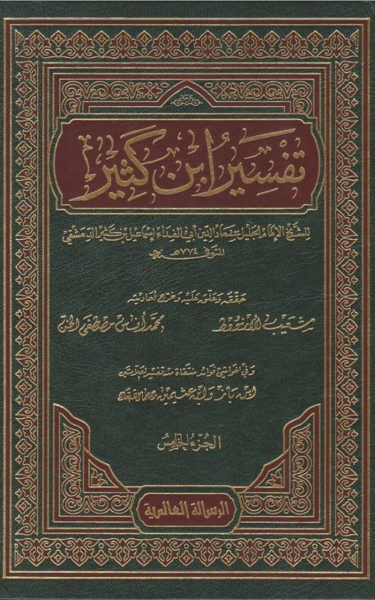
Tafsir Ibn Kathir is considered one of the earliest Saudi publications. Its first edition was printed in Cairo at al-Manar Press in 1928, in four large volumes, funded by King Abdulaziz Al Saud.
The author of Tafsir Ibn Kathir
The author of Tafsir Ibn Kathir is Imad ad-Din Abu al-Fida Ismail Bin Amr Bin Kathir Bin Diyaa Bin Kathir Bin Zur'a al-Qurashi ad-Dimashqi ash-Shafi'i (817–1373), a historian and hadith scholar. He was born in the Majdal Village, east of Damascus, and later moved to Damascus at the age of five, where he pursued his education. He studied under Shaykh al-Islam Ibn Taymiyyah and benefited greatly from his knowledge. He was a close student of al-Mizzi, with whom he read Tahdhib al-Kamal, and eventually became his son-in-law by marrying his daughter. Ibn Kathir dedicated himself to studying hadith, mastering its narrators and texts, and excelled in this field.
Ibn Kathir's works
Among his notable works are: Tafsir al-Quran al-Karim 'Al-Bidayah wa al-Nihayah' (The Beginning and the End) al-Takmil fi Ma'rifat al-Thiqat wa al-Du'afa' wa al-Majahil (The Completion in Knowing the Trustworthy, Weak, and Unknown Narrators) al-Hadi wa al-Sunan fi Ahadith al-Masanid wa al-Sunan (The Guidance and the Traditions in the Hadiths of the Masanid and the Sunan), also known as Jami' al-Masanid, among others.
Features of Tafsir Ibn Kathir
Tafsir Ibn Kathir is considered one of the most prominent works of tafsir bil-ma'thur (exegesis based on traditional sources) and follows Tafsir Ibn Jarir in this approach. Ibn Kathir compiled and refined the best features of earlier tafsir works in his interpretation. He focused on interpreting the Quran through hadiths and reports, attributing them to their original sources, and interpreting the Quran with the Quran. He also dedicated effort to verifying hadiths, assessing their authenticity or weakness, and discussing narrators as needed, addressing their reliability or flaws. Additionally, he presented verses with similar meanings, followed them with related hadiths, and supplemented these with the sayings of the Companions, the Tabi'un (successors), and the scholars of the Salaf (pious predecessors).
Related quizzes
Related articles


